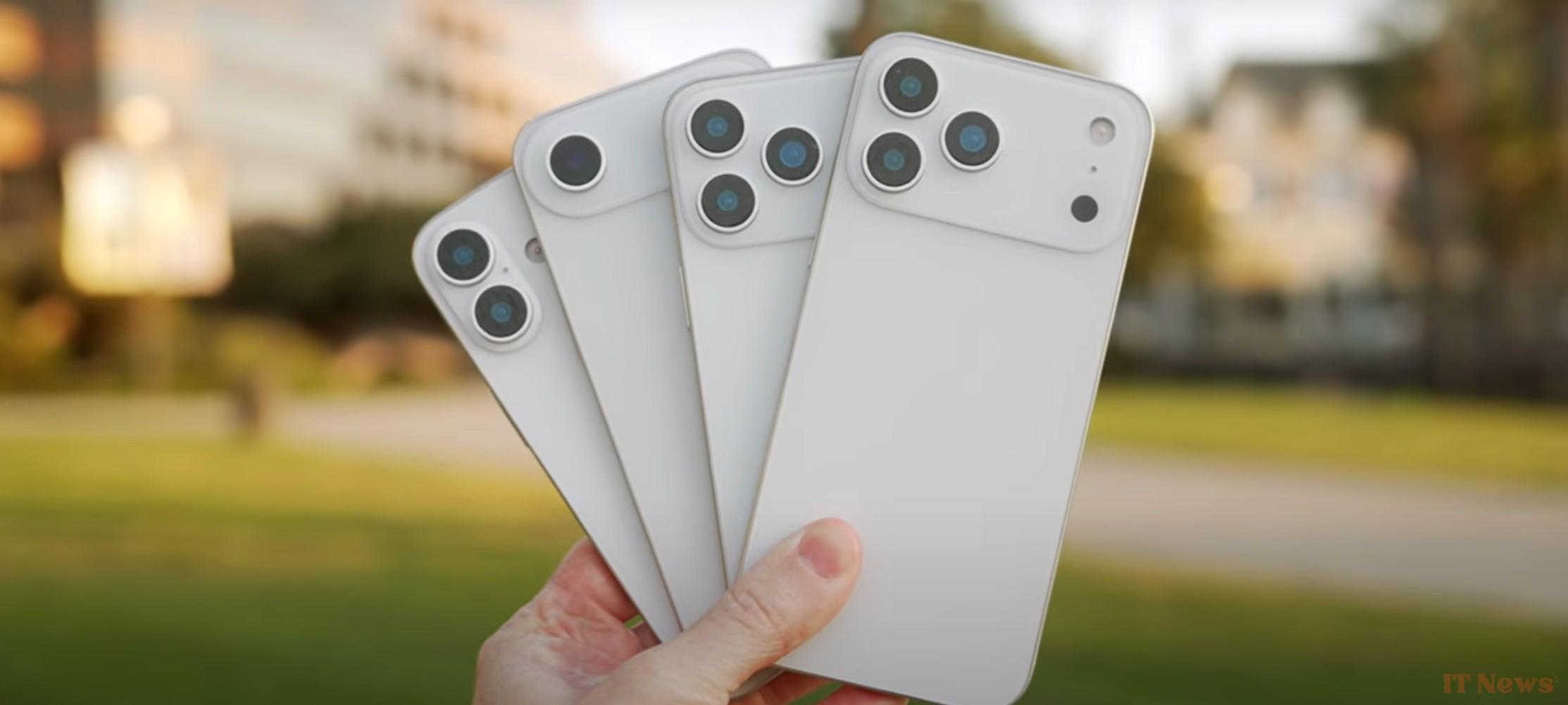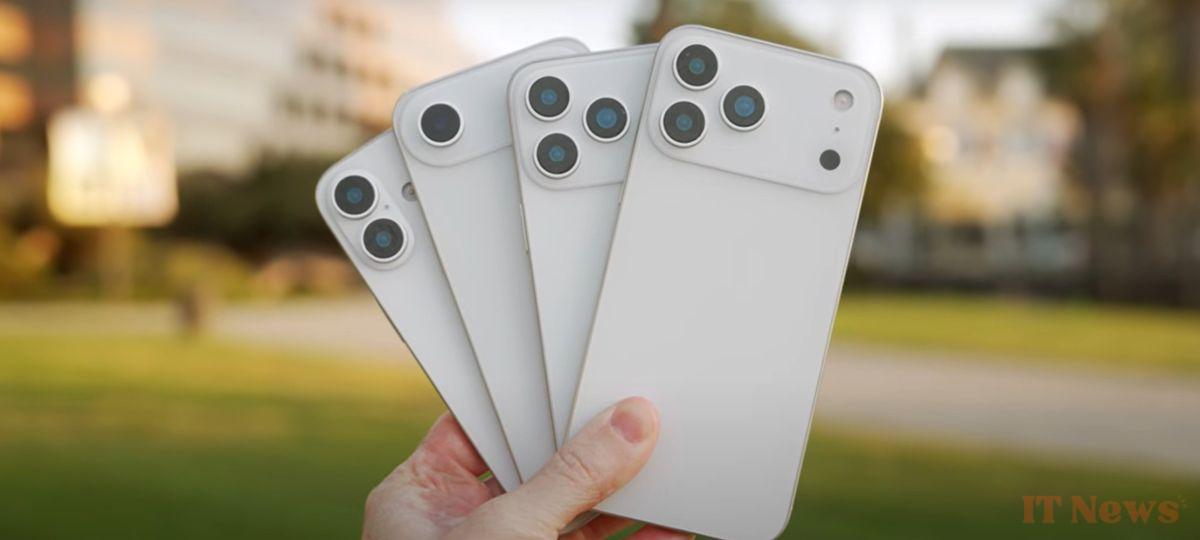We know with some precision what the different iPhone 17 models will look like. The iPhone 17 Pro will benefit from a new wide camera block, the iPhone 17 Air stands out for its thinness.
Leaks about the new design introduced by the iPhone 17 are multiplying. This time, the YouTube channel AppleTrack offers us a video preview of what all the next-generation models will look like. These are not actual devices, as Apple has not yet launched mass production, but they are very precise mockups designed based on information obtained from the brand's component suppliers.
The video confirms that the iPhone 17 will feature a significantly redesigned camera unit. On the two Pro configurations, which have three sensors, the triangular layout is retained, but the modules are now part of a much wider island, which takes up almost the entire width of the back of the smartphone.
A new camera block, except for the basic iPhone 17
For the standard iPhone 17, the changes are more subtle. The two camera sensors are still positioned vertically, grouped in an oval-shaped element, with the LED Flash located next to the block, not integrated into it. So, there's no major change here compared to the iPhone 16.
And finally, comes the new kid on the block: the iPhone 17 Air (name to be confirmed), which replaces the iPhone 17 Plus. Here, we have a panel reminiscent of the one on the Pro models, which extends across the entire width of the back of the smartphone. However, it is oval-shaped and takes up less space in height, since there is only a single camera sensor to house. It recalls the design of the Pixel 9.
We can also see how thin the iPhone 17 Air is compared to other devices. We're talking about a thickness of only 5.5 mm or 5.6 mm, compared to 8.25 mm for the iPhone 16 Pro, for example. The buttons on the edges and the USB-C port are also thinner than on the iPhone 17, iPhone 17 Pro and iPhone 17 Pro Max, but they still take up almost all the available space. Finally, we note that the USB-C connector is not exactly centered on the bottom edge. It is closer to the back of the phone than to the screen.




0 Comments